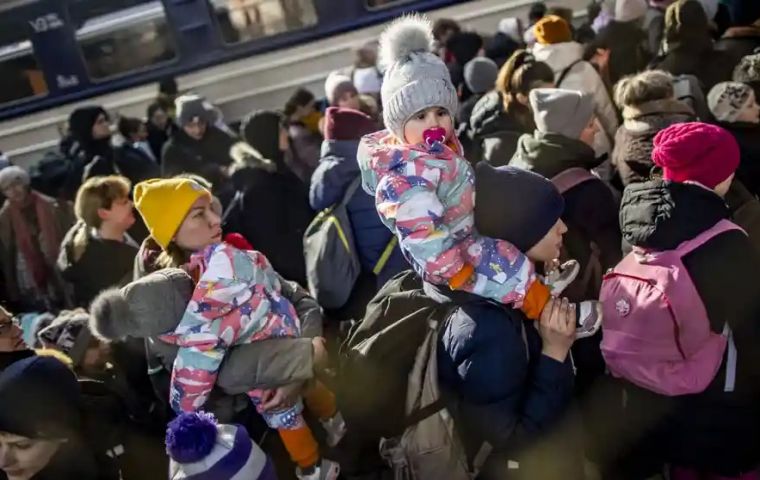MercoPress. South Atlantic News Agency
WHO Ukraine report: 28 days of war, 64 verified attacks on health care, and 18 million people affected
 Close to 7 million people are internally displaced, and the number of people that have fled to neighboring countries is fast approaching 4 million.
Close to 7 million people are internally displaced, and the number of people that have fled to neighboring countries is fast approaching 4 million. One month of war has had a devastating impact on Ukraine’s health system, severely restricted access to services, and triggered an urgent need to treat trauma injuries and chronic conditions. Destroyed health infrastructure and disrupted chains of medical supplies now pose a grave threat to millions of people.
Close to 7 million people are internally displaced, and the number of people that have fled to neighboring countries is fast approaching 4 million.
That means that 1 in 4 Ukrainians are now forcibly displaced, aggravating the condition of those suffering from noncommunicable diseases. According to the International Organization for Migration (IOM), 1 in 3 of the internally displaced suffers from a chronic condition.
A number of hospitals have been repurposed to care for the wounded: a shift due to necessity – which comes at the cost of essential services and primary health care. Approximately half of Ukraine’s pharmacies are thought to be closed. Many health workers are displaced themselves or unable to work.
Close to 1000 health facilities are close to conflict lines or are in changed areas of control. The consequence of that – limited or no access to medicines, facilities and health professionals – mean that treatments of chronic conditions have almost stopped.
COVID-19 vaccination and routine immunization has also come to a halt. Prior to the invasion, at least 50 000 people were getting vaccinated against COVID-19 per day. Between 24 February and 15 March, however, only 175 000 people were vaccinated against COVID-19.
Attacks on health care
As of 22 March, WHO had verified 64 incidents of attacks on health care in 25 days (between 24 February and 21 March) causing 15 deaths and 37 injuries. That is 2–3 attacks per day. WHO condemns these attacks in the strongest possible terms.
“Attacks on health care are a violation of international humanitarian law, but a disturbingly common tactic of war – they destroy critical infrastructure, but worse, they destroy hope,” said Dr Jarno Habicht, WHO representative in Ukraine. “They deprive already vulnerable people of care that is often the difference between life and death. Health care is not – and should never be – a target.”
WHO’s response
On the day the war started, WHO activated its contingency plans, repurposed staff and projects, and shifted focus to emergency needs – to support Ukraine’s health system and workers.
WHO works closely with Ukraine’s Ministry of Health and authorities to identify gaps and needs in the country’s health system – and swiftly respond. WHO has opened an operations hub in Rzeszów in Poland, developed a pipeline of trauma supplies to most Ukrainian cities, and sent more than 100 metric tons of medical equipment over the border, to health facilities across the country.
Some 36 metric tons of supplies are currently on their way to Lviv, with an additional 108 metric tons in the pipeline, consisting of trauma supplies, medication for chronic diseases, pediatric drugs and blood transfusion supplies.
As part of a United Nations convoy on 18 March, a WHO truck also reached Sumy in the north-east of Ukraine, carrying critical medical supplies sufficient to treat 150 trauma patients and provide primary health care to 15 000 patients for 3 months. Among other deliveries to health facilities in past days are artificial lung ventilation machines, chemical protection suits, a hematology analyzer, liquid oxygen bulk tanks and cryogenic cylinders.
More than 20 emergency medical teams have also been deployed to Ukraine, Poland and the Republic of Moldova, to provide training and specialized medical care to supplement existing services.




Top Comments
Disclaimer & comment rulesCommenting for this story is now closed.
If you have a Facebook account, become a fan and comment on our Facebook Page!